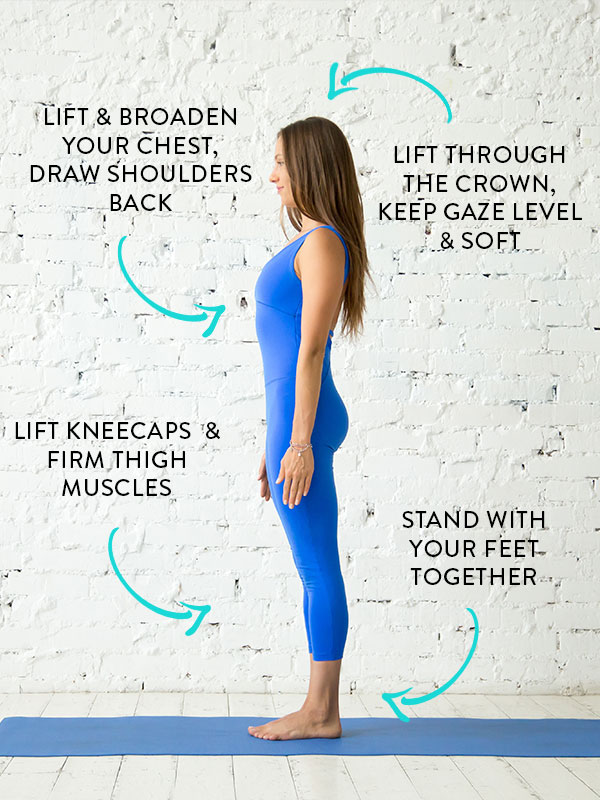Learn how to practice and teach Mountain Pose (Tadasana) with detailed anatomy and informed, verbal cues to help you and your students enter and exit with safe alignment.
Sanskrit name: Tadasana (also called Samasthiti)
English translation: Mountain Pose
About Mountain Pose
- Symmetrical standing pose
- “Tada” means mountain. “Sama” means upright, straight, unmoved. “Sthiti” is steadiness.
- “Bija” or “seed” pose (i.e., the pose that all other poses come from)
- Teaches vocabulary, fundamentals of movement and actions, and the relationship of our limbs to our spine
- Teaches how to practice asana with awareness, as we discover and cultivate dynamic tension

Instruction Cues
- Stand with your feet together. Bring the inner edges of your feet together: big toes touching, heels touching.
- Stand up tall and look straight ahead.
- Straighten your legs. Lift your kneecaps upward to firm your thigh muscles.
- Turn your thighs inward. Drop your tailbone toward your heels to lengthen your lower back and lift the front of your pelvis slightly.
- Lift and broaden your chest by drawing your shoulders back and your shoulder blades down. Reach through your fingertips.
- Lift up through the crown of your head. Keep your gaze level and soft.
- To exit the pose: Relax your arms and legs and stand with a neutral spine.
Watch For
- Collapsed chest
- Feet turned in or out
- Hyperextension of knees
- Position of the lower back
- Soft ankles
- Instability / difficulty balancing. Modification: Separate heels or separate feet.
INTERESTED IN ADVANCED STUDY, OR BECOMING A YOGA TEACHER?
[button type=”flat” shape=”rounded” size=”small” class=”yoga-garden” href=”folksf.com/yoga-teacher-training/” title=”Example”]Learn More[/button]

